
High Seas Adventures
You can have a great saltwater game fishing story of your own.
“He came out unendingly and water poured from his sides. He was bright in the sun and his head and back were dark purple and in the sun the stripes on his sides showed wide and a light lavender. His sword was as long as a baseball bat and tapered like a rapier and he rose his full length from the water and then re-entered it, smoothly, like a diver and the old man saw the great scythe-blade of his tail go under and the line commenced to race out.” —Ernest Hemingway, The Old Man and the Sea
In Ernest Hemingway’s 1952 novella The Old Man and the Sea, the elderly fisherman’s first glimpse of the 18-foot marlin he would battle for three days and nights was based on the author’s years of experience fishing marlin out of Havana. At home on Key West, he often chased tarpon, Florida’s signature game fish, about which author A.W. Dimock had earlier penned a similarly evocative description: “That twisting, gyrating body, garmented in glistening silver and enveloped in a cloud of sparkling diamonds, was unlike any denizen of Earth.” Dimock’s Book of the Tarpon (1911) sparked a high-society fishing frenzy; and Hemingway’s later story won the Pulitzer Prize, spawned an Academy Award–winning film, and seven decades later, still inspires global travelers to charter sportfishing boats in pursuit of their “Old Man” moment.
Besides the thrilling action, the appeals of saltwater game fishing are many, and even before the first strike; time on the water drinking beers with friends in often tropical locales rarely disappoints. But the real beauty of this activity is that it requires only interest, not expertise, and even first-timers can break records. In every top destination around the globe, there are staffed, fully equipped charters awaiting the would-be angler, complete with crew expertise. Passionate and knowledgeable hobbyists can get as hands-on as they want, but otherwise crew will bait lines, set up trolling, and upon a strike, tell you when to climb into the fighting chair, hand you the rod, and explain what to do. Yet when you pull the fish from the sea, minutes or hours later, whether it is a 30-pound tuna or a half-ton marlin, the thrill is all yours.
Saltwater fishing can be done from the beach or pier, and fly-fishing enthusiasts may take their light tackle to the ocean to test their skills against much larger fish, but for the vast majority of travelers, saltwater game fishing is an offshore, deep-sea pursuit using heavy tackle and specially designed boats 35 feet or longer.
In most cases, those taking charters are seeking a particular regional prize, but unexpected quarry is the norm, and a single-day trip can net a dozen different catches, adding to the mystique. The notable exception to the deep-sea rule is salmon, typically fished inshore on protected straits and bays near land rather than open ocean, and it is done from smaller boats (but it is no less thrilling). Saltwater game fishing spans many dozens of species, including little-known catches such as roosterfish, snook, and bonitos, but a handful of prizes remain the stuff of anglers’ dreams, and worth traveling thousands of miles to pursue. With almost all modern, professional charters, only fish for consumption, such tuna and salmon, are kept to be enjoyed at the table, while billfish and many others are always released back into the wild—after the pictures are taken. These four are the most coveted saltwater game fish to wrangle, alongside details about the best places to find them.
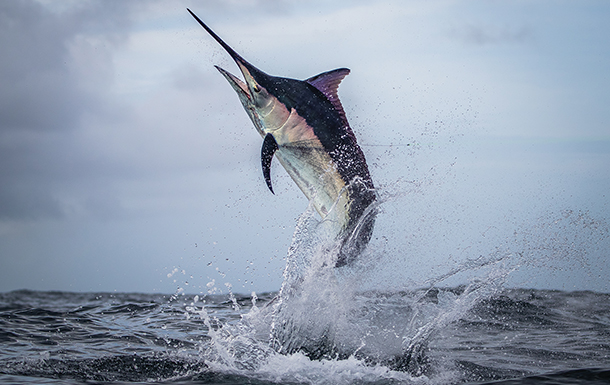
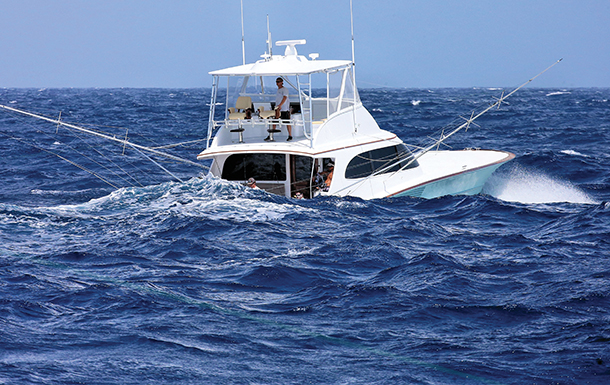
BILLFISH
The kings and queens of the sea are the four main species of billfish: marlin, spearfish, sailfish, and swordfish. Marlin can be blue, black, white, and striped, the latter being the “smallest” with a world record of 494 pounds. The others can be over half a ton. The billfish world-record holder (for nearly 70 years) is a 1,560-pound black marlin. The International Game Fish Association (IGFA), which maintains records, defines a fishing Grand Slam as an angler catching three specific fish in a 24-hour period. There are many regional and obscure variants, such as Florida’s Inshore Slam (red drum, spotted seatrout, and flounder). But for bragging rights, the Grand Slam that counts is a trio of billfish, and in the world’s best fishing grounds, such as Panama, it is possible to catch and release four for the coveted Super Slam.
For world-record catches, far-flung marlin hot spots include Australia’s Cairns, Portugal’s Azores and Madeira islands, and Fiji. Closer to home, the best include Hawaii’s Kona Coast (home to multiple world records), many Caribbean islands (à la Hemingway), Panama, and Mexico’s Baja peninsula. All offer ample charter boats, but for top resorts with their own marinas and one-stop, world-class fishing vacations, standouts include Panama’s fabled Tropic Star Lodge (tropicstar.com), a classic Grand and Super Slam destination, and Mexico’s Villa del Palmar at the Islands of Loreto by Danzante Bay (villadelpalmarloreto.com). Further up the peninsula and surrounded by protected natural reserve waters and islands, Loreto is far less crowded than Los Cabos.
For the past three years, fishing website The Billfish Report has ranked the southeastern Dominican Republic as the most consistent location in the world, and it is hard to beat legendary Casa de Campo Resort & Villas (casadecampo.com.do), a top-tier golf destination with a well-equipped marina. The area is a standout for blue marlin, other billfish species, and prized catches such as mahi-mahi, wahoo, and tuna.
With a long season for white and blue marlin and sailfish, the billfish capital of the continental United States is the Outer Banks of North Carolina, which has a dizzying array of both inshore and offshore fishing. With thousands of rental homes, the region lacks a dedicated fishing resort but has a world-class marina, Pirate’s Cove (fishpiratescove.com), with a large modern sportfishing charter fleet and an on-site cook-your-catch restaurant.
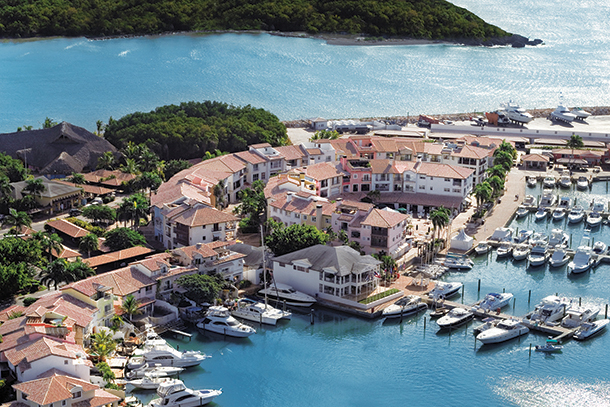
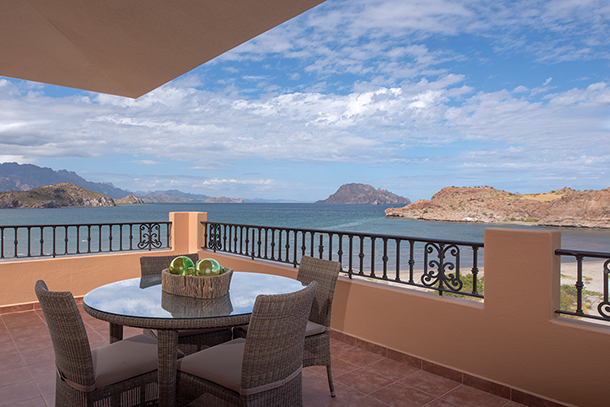
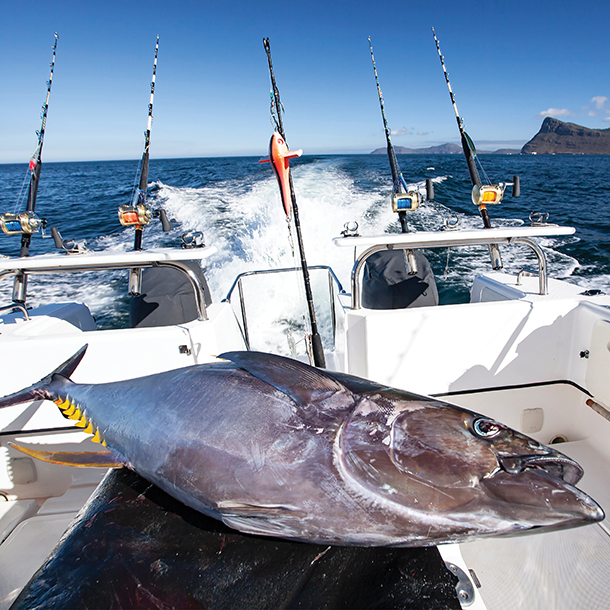
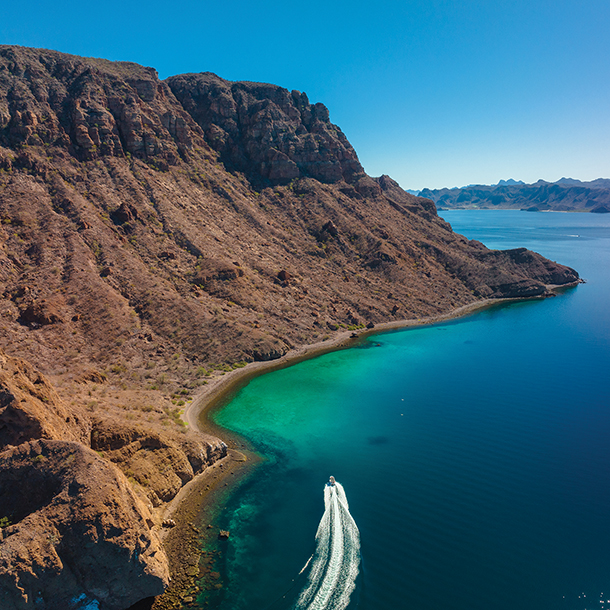
TUNA
There are more than a dozen very different types of tuna with world-record categories, and the biggest exceed even marlin—the giant northern bluefin can run over 1,600 pounds. But the most sought after is the yellowfin, a perfect combination of size (up to 400 pounds), fight, beauty, and taste (it’s known on restaurant menus as ahi). Yellowfin swim in schools, making multiple fast and furious catches common, and are found widely all over the world.
Fortunately, they also tend to be prevalent in the same places as many marlin: Hawaii’s Kona Coast is legendary, Panama is an excellent spot, and many world-record catches have occurred off Mexico’s Baja peninsula. Panama’s Tropic Star Lodge and Baja California’s Loreto Bay are top fishing resorts where multiple types of marlin and big tuna can be found.
The Outer Banks of North Carolina also offer excellent yellowfin fishing, while the state’s southern tip, Cape Hatteras, has world-class bluefin fishing in winter. The large Atlantic bluefin is the other coveted tuna, and the most prized for eating. But it is a colder-water catch, hence National Geographic’s reality show Wicked Tuna is set in Massachusetts, and the current world record was caught in Nova Scotia.
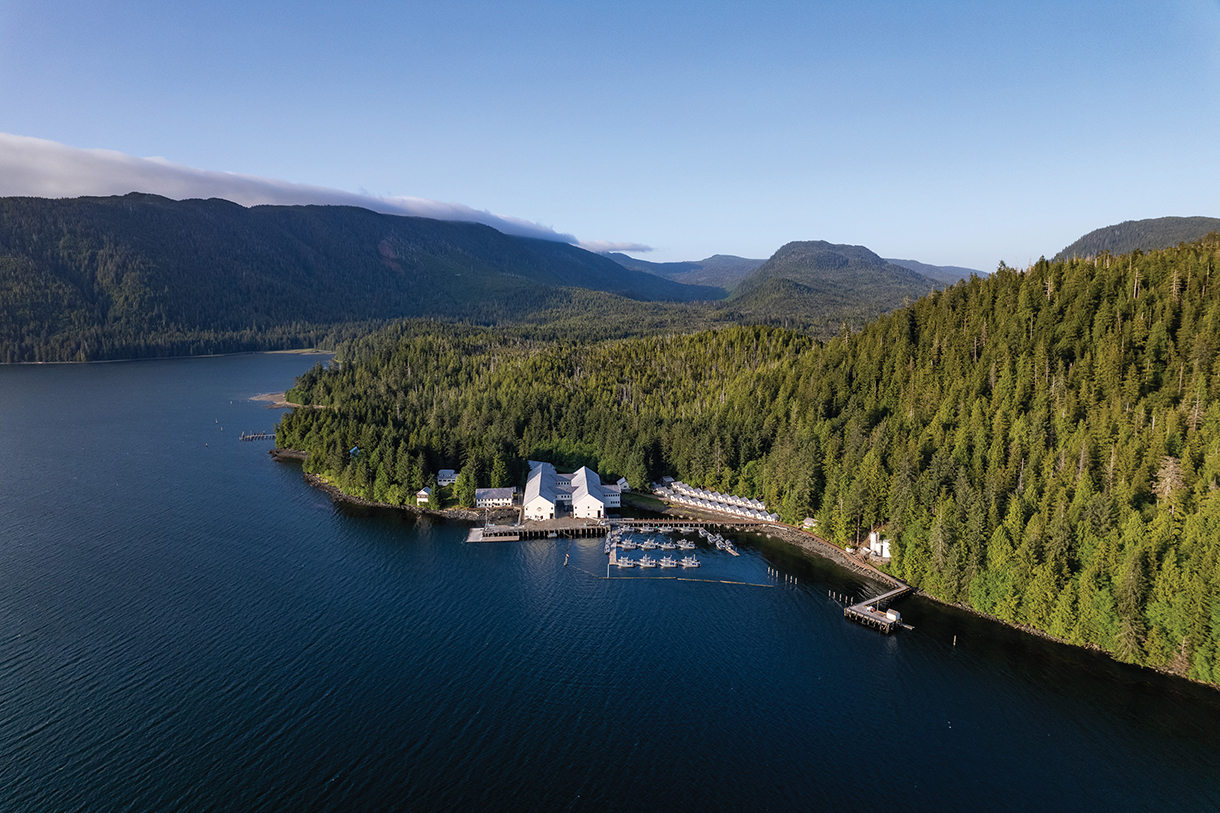
SALMON
Among all the world’s fish, salmon are especially prized because they offer great sport in beautiful settings and are exceptional for eating. Because Atlantic salmon is commercially extinct, most salmon consumed are farmed, be it from Iceland, Scotland, Norway, or Nova Scotia. Wild caught is more expensive, more desirable, more natural, tastes better, and is exclusively from the Pacific, which essentially means Alaska.
There are five Pacific salmon: king (Chinook), silver (coho), sockeye, pink, and chum. King are the largest, averaging 20–40 pounds and 3–4 feet long, but can run up to 80 pounds. Almost everyone who fishes salmon visits the 49th state, where there are several dedicated fishing lodges, most of which will trim, vacuum pack, and flash freeze your catch to take home, so anglers enjoy a year’s worth of feasting on great memories.
Two properties are standouts, and as early as 1992 the iconic reference book Saltwater Gamefishing praised the skilled staff at Waterfall Resort Alaska (waterfallresort.com), with more than a century of fishing tradition on an island within the Pacific Northwest’s Inside Passage. The outfit offers a mix of lodge rooms, cabins, suites, and townhomes, a custom fishing boat fleet, and expert guides with all-inclusive fishing packages. Its more upscale sister resort Steamboat Bay Fishing Club (steamboatbay.com) is operated in the style of a private club with gourmet cuisine and state-of-the-art gear. Both locations offer exceptional opportunities for king and silver salmon along with desirable halibut (up to 300 pounds).
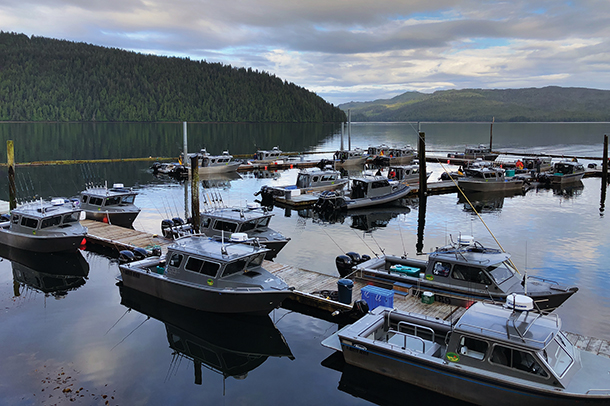
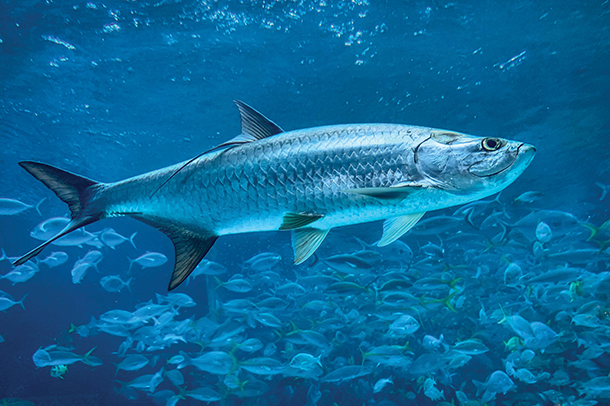
TARPON
The “silver king” of game fish, tarpon are prized as the rare shallow water (3–4 feet) fish capable of diving more than 100 feet. Thus, these ferocious fighters can take hours to reel in. They can reach 8 feet and weigh nearly 300 pounds. Florida is the world’s best place for tarpon fishing, from the Keys up the west coast, but the epicenter is the islands off Fort Myers, Sanibel, Captiva, and Boca Grande. There are many marinas and charters here, and one resort with its own marina is Captiva’s South Seas Island Resort (southseas.com). In the Keys, Hawks Cay Resort (hawkscay.com) on tiny Duck Key has a well-equipped marina, while the small Bahia Honda Sporting Club (bahiahondaclub.com) near Key West is one of the only all-inclusive fishing lodges in Florida.




